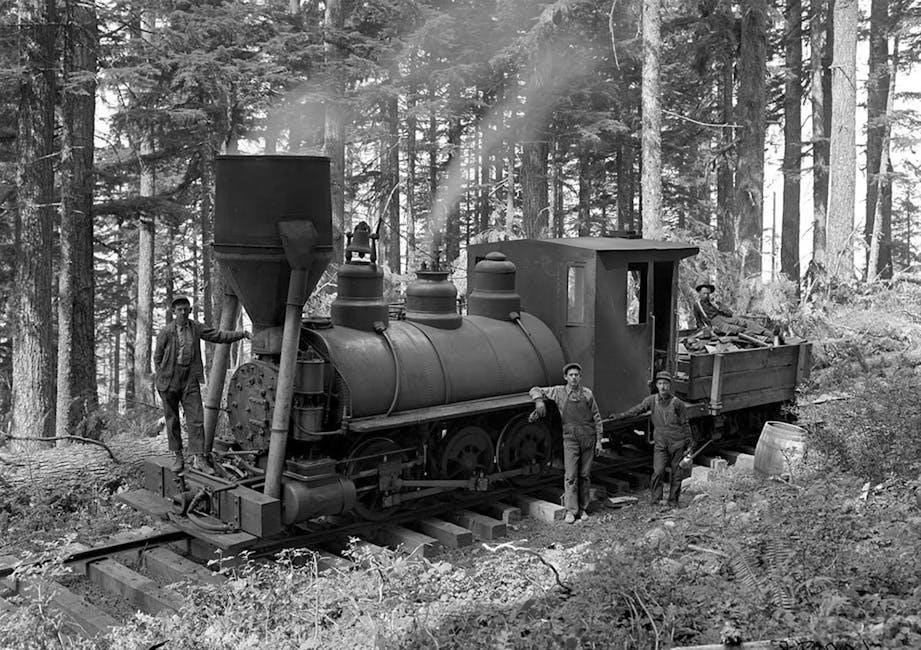
Explore the significance of U.S. history through engaging worksheets in PDF format‚ designed to simplify learning and retention of key historical events and cultural context.
1.1 Overview of the Importance of History Education
History education is essential for understanding the present and shaping the future. It connects individuals to their cultural heritage and fosters critical thinking about past events. By studying history‚ students gain insights into societal development‚ political systems‚ and cultural diversity. This knowledge helps them appreciate the complexities of human experiences and the evolution of ideas over time. Understanding history also promotes informed citizenship and empathy‚ enabling students to engage meaningfully with global issues. Moreover‚ it encourages the development of analytical skills‚ which are vital for personal and societal progress. U.S. history worksheets play a key role in making this learning interactive and accessible.
1.2 Role of Worksheets in Learning U.S. History
Worksheets serve as an interactive and structured tool for engaging with U.S. history. They provide a hands-on approach to learning‚ allowing students to explore historical events‚ key figures‚ and cultural developments. Worksheets often include exercises like timelines‚ crossword puzzles‚ and short-answer questions‚ which reinforce retention and understanding. They cater to diverse learning styles‚ making history accessible to all students. Additionally‚ worksheets offer a clear framework for studying complex topics‚ enabling students to organize their knowledge and develop critical thinking skills. This structured approach helps students connect historical events to their broader significance‚ fostering a deeper appreciation for the subject.
1.3 Benefits of Using PDF Formats for Educational Resources
PDF formats provide numerous advantages for educational resources‚ particularly for U.S. history worksheets. Their universal compatibility ensures that content remains consistent across different devices and operating systems. PDFs are easily shareable‚ making them accessible to students and educators worldwide. They also offer security‚ as content is protected from unauthorized edits. Additionally‚ PDFs can include multimedia elements‚ enhancing the learning experience. Their portability allows students to access materials anytime‚ promoting self-study. Overall‚ PDFs are a reliable and versatile format for delivering educational content‚ supporting both in-class and remote learning environments effectively.

Key Historical Periods Covered in U.S. History Worksheets
U.S. history worksheets cover essential periods‚ including the Colonial Era‚ American Revolution‚ Civil War‚ Industrialization‚ World Wars‚ and the Civil Rights Movement‚ providing a comprehensive timeline.
2.1 Colonial Era and the Founding of the United States
The Colonial Era‚ spanning the 17th to 18th centuries‚ laid the foundation of the United States. Worksheets explore the 13 colonies‚ their daily life‚ and governance. Key events like the Mayflower Compact (1620) and the Massachusetts Bay Colony’s establishment (1630) highlight early American settlements. These resources also cover the role of influential figures‚ such as John Winthrop‚ who shaped colonial values. The era’s economic systems‚ including agriculture and trade‚ are detailed‚ along with the growing tensions with Britain that eventually led to the American Revolution. These worksheets provide a comprehensive understanding of the nation’s origins and development.
2.2 American Revolution and the Birth of Independence
The American Revolution (1765–1783) was a pivotal period where the 13 colonies sought independence from Britain. Worksheets cover key events like the Boston Tea Party‚ Lexington and Concord battles‚ and the Declaration of Independence (1776). They highlight founding documents‚ such as the Articles of Confederation and the U.S. Constitution‚ which shaped the nation’s governance. The Treaty of Paris (1783) ending the war is also explored. These resources help students understand the Revolution’s causes‚ including taxation without representation‚ and its legacy in forming the United States as a sovereign nation.
2.3 Civil War and Reconstruction
The Civil War (1861–1865) was a defining conflict over slavery‚ states’ rights‚ and economic systems. Worksheets explore the Union vs. Confederacy‚ key battles like Gettysburg‚ and the Emancipation Proclamation (1863). The war’s end with the 13th Amendment abolished slavery. Reconstruction (1865–1877) focused on rebuilding the South‚ granting citizenship to African Americans‚ and enforcing the 14th and 15th Amendments. Worksheets highlight challenges like Jim Crow laws and the rise of groups like the KKK. These resources help students grasp the war’s impact and Reconstruction’s complexities in shaping U.S. society and civil rights.
2.4 Industrialization and Immigration
Industrialization transformed the U.S. economy in the late 19th and early 20th centuries‚ driven by technological advancements and mass production. Worksheets cover key figures like Rockefeller and Carnegie‚ labor movements‚ and the growth of cities. Immigration during this period brought diverse cultures and challenges. Worksheets explore the experiences of immigrants‚ the impact of laws like the Chinese Exclusion Act (1882)‚ and the melting pot concept. These resources help students understand how industrialization and immigration shaped modern America’s economy‚ society‚ and identity;
2.5 World Wars and the Great Depression
U.S. history worksheets explore the profound impact of World War I and World War II on America. Topics include the nation’s initial neutrality‚ entry into both wars‚ and key events like Pearl Harbor. The Great Depression worksheets cover the economic crisis‚ the New Deal‚ and its societal effects. These resources help students analyze primary sources‚ understand global conflicts‚ and connect historical events to modern challenges‚ fostering a deeper understanding of America’s role in global affairs and its resilience during hardship.
2.6 Civil Rights Movement and Modern Era
U.S. history worksheets delve into the Civil Rights Movement‚ highlighting key events like the Montgomery Bus Boycott‚ the March on Washington‚ and the passage of the Civil Rights Act of 1964. They also explore the roles of influential figures such as Martin Luther King Jr. and Rosa Parks. Modern era topics include the ongoing fight for racial equality‚ the emergence of social justice movements‚ and the evolution of civil rights to encompass diverse identities. These resources help students connect historical struggles to contemporary issues‚ fostering empathy and understanding of the ongoing pursuit of equality in America.

Educational Tools and Resources for Teaching U.S. History
Educational tools and resources for teaching U.S. history include worksheets‚ interactive activities‚ and multimedia content‚ designed to align with curriculum standards and enhance student engagement.
3.1 Types of Worksheets Available for Download
U.S. history worksheets PDFs offer diverse learning tools‚ including timelines‚ maps‚ primary source analyses‚ and problem-solving exercises. They cover chronological periods‚ thematic studies‚ and skill-based activities like critical thinking and research. Interactive elements such as crossword puzzles‚ word searches‚ and matching games make learning engaging. Worksheets also include graphic organizers for visual learners and essay prompts for advanced students. These resources cater to various learning styles and proficiency levels‚ ensuring comprehensive understanding of historical events‚ cultural contexts‚ and key figures in American history. They are designed to be adaptable for different classroom needs and teaching approaches.
3.2 Interactive and Engaging Activities for Students
Interactive U.S. history worksheets PDFs feature activities like crossword puzzles‚ word searches‚ and matching games to make learning fun. They incorporate multimedia elements such as timelines‚ maps‚ and primary sources to deepen understanding. Role-playing exercises and debates encourage critical thinking and collaboration. Gamification‚ like point systems or badges‚ motivates students. Interactive PDFs may include clickable links to videos or audio clips‚ enhancing engagement. These activities cater to diverse learning styles‚ making history relatable and enjoyable while fostering a deeper connection to the subject matter.
3.3 Aligning Worksheets with Curriculum Standards
U.S. history worksheets PDFs are designed to align with curriculum standards‚ ensuring educational consistency and meeting learning objectives. They cover key historical topics and skills outlined in state and national frameworks. By matching content to specific standards‚ worksheets help teachers assess student progress effectively. This alignment ensures comprehensive coverage of essential knowledge‚ supporting both instruction and accountability. Worksheets tailored to standards enable educators to integrate them seamlessly into lesson plans‚ promoting a cohesive learning experience that prepares students for assessments and lifelong understanding of American history.

Teaching Methods and Strategies
Effective teaching methods involve integrating worksheets into lesson plans‚ promoting critical thinking‚ and using differentiated instruction to cater to diverse learning needs and abilities.
4.1 Integrating Worksheets into Lesson Plans
Integrating U.S. history worksheets into lesson plans enhances learning by aligning activities with curriculum goals. Teachers can introduce a topic through discussion or multimedia‚ then use worksheets to reinforce concepts. By incorporating worksheets at strategic points‚ educators ensure students engage actively with historical content. This method promotes retention and application of knowledge. Worksheets also serve as a bridge between instruction and independent practice‚ allowing students to process information at their own pace. Effective integration involves clear instructions and timely feedback‚ fostering a structured yet flexible learning environment that supports academic success and historical understanding.
4.2 Encouraging Critical Thinking Through Worksheets
U.S; history worksheets can be designed to foster critical thinking by including analytical questions and activities. Rather than mere recall‚ prompts might ask students to interpret primary sources‚ evaluate historical decisions‚ or connect past events to modern issues. Open-ended questions encourage deeper reflection‚ while comparative exercises help students synthesize information. Worksheets can also incorporate problem-solving tasks‚ such as resolving historical dilemmas or debating differing perspectives. By challenging students to think beyond facts‚ these exercises cultivate essential skills like analysis and reasoning‚ preparing them for complex historical inquiries and real-world applications.
4.3 Using Worksheets for Differentiated Instruction
Worksheets can be tailored to meet the diverse needs of students‚ supporting differentiated instruction. Teachers can create tiered activities‚ with varying difficulty levels to suit different learning abilities; For example‚ graphic organizers help visual learners‚ while advanced questions challenge gifted students. Worksheets can also incorporate scaffolding techniques‚ enabling students to build skills progressively. Additionally‚ interactive PDFs allow for embedded links or multimedia‚ providing personalized learning paths. This approach ensures that all students‚ regardless of their learning style or ability‚ can engage meaningfully with U.S. history content‚ fostering an inclusive and effective learning environment.

Assessment and Evaluation
Worksheets are valuable tools for assessing student understanding of U.S. history. They include varied exercises like multiple-choice questions‚ short answers‚ and essays to evaluate knowledge retention and critical thinking. Additionally‚ they help teachers monitor progress and identify areas needing more instruction‚ ensuring comprehensive evaluation and effective learning outcomes.
5.1 Types of Questions and Exercises in Worksheets
Worksheets for U.S. history often include multiple-choice questions‚ short-answer prompts‚ and essay questions to assess comprehension. They also feature exercises like timelines‚ map labeling‚ and primary source analysis to engage students. These tools help evaluate factual knowledge‚ critical thinking‚ and the ability to interpret historical events. Interactive exercises‚ such as matching games or cause-and-effect charts‚ further enhance understanding and retention. Diverse question types cater to different learning styles‚ ensuring a comprehensive assessment of student progress and mastery of historical concepts.
5.2 Grading and Feedback Techniques
Grading worksheets involves using clear rubrics to assess accuracy‚ completeness‚ and critical thinking. Feedback should be specific‚ highlighting strengths and areas for improvement. Teachers often use stamped comments or detailed notes to guide students. Timing feedback appropriately ensures students can reflect and apply corrections. Peer review and self-assessment are also effective‚ fostering accountability and deeper understanding. Consistent grading criteria help maintain fairness‚ while constructive feedback encourages growth and engagement in learning U.S. history. Regular review of feedback practices enhances teaching strategies and student outcomes.
5.3 Using Worksheets for Formative and Summative Assessments
Worksheets are versatile tools for both formative and summative assessments in U.S. history education. Formative assessments use worksheets to monitor progress‚ identify knowledge gaps‚ and adjust instruction. Examples include quizzes‚ classwork‚ or exit tickets. Summative assessments‚ like unit tests or projects‚ evaluate student mastery at the end of a lesson or term. Worksheets aligned with learning objectives provide clear expectations. They also offer a structured way to track student growth and understanding‚ ensuring comprehensive evaluation of historical concepts and skills. Regular use enhances both teaching and learning effectiveness in the classroom.

Technology Integration in History Education
Technology enhances history learning by providing interactive tools and digital resources‚ making U.S. history worksheets more engaging and accessible for modern students.
6.1 Digital Tools for Creating and Sharing Worksheets
Digital tools like Google Docs‚ Canva‚ and Adobe Acrobat enable educators to create and share U.S. history worksheets effortlessly. These platforms allow customization‚ real-time collaboration‚ and seamless sharing in PDF formats. Teachers can design visually appealing worksheets‚ incorporate multimedia elements‚ and distribute them instantly to students. Cloud-based tools also ensure accessibility from any device‚ fostering flexibility in learning. Additionally‚ digital tools reduce paper waste‚ aligning with modern eco-friendly educational practices while enhancing efficiency and engagement in the classroom.
6.2 Online Platforms for Interactive History Learning
Online platforms like Khan Academy‚ Duolingo‚ and Quizlet offer interactive tools for engaging U.S. history lessons. These platforms provide quizzes‚ gamified activities‚ and multimedia content that complement traditional PDF worksheets. They allow students to explore historical events through simulations‚ timelines‚ and interactive maps. Such resources enhance critical thinking and retention‚ making history more accessible and enjoyable. Teachers can integrate these platforms with PDF materials for a blended learning approach‚ ensuring a dynamic and interactive educational experience that caters to diverse learning styles and preferences.
6.3 Multimedia Resources to Enhance Worksheet Content
Multimedia resources‚ such as images‚ videos‚ and audio clips‚ can enrich worksheet content for U.S. history. Platforms like YouTube Education and Google Arts & Culture offer historical footage and virtual tours. Interactive timelines and podcasts also provide immersive learning experiences. These resources help students visualize events and connect with historical narratives on a deeper level. By incorporating multimedia elements‚ teachers can make worksheets more engaging and cater to visual and auditory learners‚ fostering a more dynamic and comprehensive understanding of U.S. history.
Special Needs and Inclusive Education
Inclusive education ensures U.S. history worksheets are adapted for diverse learners‚ offering modified formats and additional support to fully meet varying needs and abilities effectively.
7.1 Worksheets for Students with Special Needs
U.S. history worksheets designed for students with special needs provide tailored resources to accommodate diverse learning requirements. These worksheets often include simplified language‚ visual aids‚ and adaptable formats to suit individual needs. They cater to various learning styles‚ such as visual‚ auditory‚ and kinesthetic learners‚ ensuring inclusivity. Additionally‚ some worksheets incorporate assistive technology compatibility‚ like text-to-speech features‚ to enhance accessibility. By offering differentiated instruction‚ these materials help students with special needs engage effectively with historical content‚ fostering a more inclusive and supportive learning environment that promotes academic success and understanding of U.S. history.
7.2 Adapting Worksheets for Diverse Learning Abilities
Adapting U.S. history worksheets for diverse learning abilities ensures all students can engage with the content effectively. This includes simplifying complex texts‚ using visual aids‚ and breaking down topics into manageable sections. For visual learners‚ charts and timelines are particularly useful‚ while hands-on activities cater to kinesthetic learners. Additionally‚ worksheets can be modified to include audio descriptions or translations for students with language barriers. By incorporating scaffolding techniques and offering multiple formats‚ educators can meet the needs of a varied classroom‚ ensuring equitable access to historical knowledge and fostering a more inclusive learning experience for all students.
7.3 Cultural Sensitivity in Historical Content
Cultural sensitivity is crucial when developing U.S. history worksheets to ensure respectful and accurate representation of diverse cultures. Worksheets should avoid stereotypes and present balanced perspectives‚ particularly when addressing sensitive topics like colonization‚ slavery‚ or indigenous histories. Inclusive language and diverse imagery help create a welcoming environment for all students. By incorporating primary sources and narratives from underrepresented groups‚ educators can promote empathy and understanding. This approach fosters a more inclusive and equitable learning experience‚ encouraging students to appreciate the complexity of historical events and their impact on different communities.

Popular Sources for Downloading U.S. History Worksheets
Teachers and students can access U.S. history worksheets through educational websites‚ teacher-created platforms‚ and open-source repositories. Popular sources include dedicated history portals‚ teacher communities‚ and free educational databases.
8.1 Educational Websites and Portals
Educational websites and portals are among the most accessible sources for U.S. history worksheets. Platforms like Teachers Pay Teachers and National Archives offer a wide range of downloadable resources. Many of these websites provide free or low-cost materials‚ making them ideal for teachers and students. They often include worksheets tailored to specific historical periods‚ such as the American Revolution or the Civil War. These portals also feature interactive content‚ ensuring engaging and immersive learning experiences. Popular sites like Smithsonian Education and PBS LearningMedia further enhance the availability of high-quality educational materials.
8.2 Teacher-Created Resources and Communities
Teacher-created resources and communities play a vital role in providing high-quality U.S. history worksheets. Educators often share their custom-designed materials on platforms like Teachers Pay Teachers‚ offering diverse and engaging content. These resources are frequently tailored to specific curriculum needs‚ ensuring relevance and adaptability for various classroom settings. Teacher communities also foster collaboration‚ allowing educators to exchange ideas and refine their materials. This grassroots approach ensures worksheets are practical‚ student-centered‚ and aligned with teaching objectives‚ making them invaluable for effective history education.
8.3 Open-Source and Free Educational Materials
Open-source and free educational materials provide accessible and cost-effective options for U.S. history worksheets. Platforms like GitHub‚ OpenStax‚ and Google Classroom host a variety of free resources‚ including PDF worksheets‚ lesson plans‚ and multimedia content. These materials are often created by educators and are customizable to meet specific teaching needs. Open-source resources promote collaboration‚ as teachers can contribute and refine content collectively. They also ensure equitable access to high-quality educational tools‚ making history learning more inclusive and engaging for students worldwide. This approach aligns with modern education’s goal of accessibility and equality.

Best Practices for Using Worksheets Effectively
Encourage active participation‚ integrate worksheets with multimedia‚ and align activities with learning objectives to maximize engagement and understanding in U.S. history lessons.
9.1 Encouraging Student Engagement and Participation
- Incorporate interactive elements like puzzles and timelines to make learning hands-on and enjoyable.
- Use primary sources such as letters and photographs to connect students with historical events.
- Leverage digital tools for worksheet completion on tablets or laptops to cater to tech-savvy learners.
- Highlight real-world applications of historical events to demonstrate their relevance to students’ lives.
These strategies enhance engagement and participation by making history relatable and dynamic‚ fostering a deeper interest in the subject.
9.2 Promoting Collaboration and Group Work
- Assign group projects where students work together on historical scenarios or case studies from worksheets.
- Encourage peer discussion and problem-solving activities based on worksheet content.
- Use digital worksheets that allow multiple students to collaborate in real-time.
- Incorporate role-playing activities to simulate historical events‚ fostering teamwork and understanding.
Collaborative learning enhances critical thinking and communication skills while making history lessons more engaging and interactive for students.
9.3 Integrating Worksheets with Other Teaching Aids
Combining worksheets with textbooks‚ multimedia‚ and hands-on activities creates a comprehensive learning experience. Use timelines‚ videos‚ and interactive maps alongside worksheets to deepen understanding. Pair readings with worksheet exercises to reinforce key concepts. Incorporate group discussions and presentations to expand on worksheet topics. This integrated approach ensures students engage with material in multiple ways‚ enhancing retention and critical thinking. By blending diverse teaching aids‚ educators can create a dynamic and enriching curriculum that caters to various learning styles.

Common Challenges and Solutions
Teachers face challenges like student disinterest and resource management when using U.S. history worksheets. Solutions include modernizing content‚ leveraging technology‚ and collaborating with peers to maintain engagement and efficiency.
10.1 Addressing Student Disinterest in History
Student disinterest in history can hinder effective learning. To combat this‚ educators can make history relatable by connecting it to students’ lives and current events. Incorporating interactive elements like role-playing‚ primary sources‚ and multimedia can spark engagement. Encouraging critical thinking through debates or problem-solving activities also fosters interest. Providing choices‚ such as selecting specific historical figures or events‚ allows students to take ownership of their learning. Additionally‚ integrating diverse perspectives and cultural experiences can make history more inclusive and relevant‚ helping students see its significance in their world.
10.2 Managing Time and Resources for Worksheet Creation
Creating U.S. history worksheets can be time-consuming‚ but educators can manage resources effectively by planning ahead. Prioritize topics and align them with curriculum goals to avoid redundant work. Use pre-designed templates or adapt existing materials to save time. Leverage digital tools like Canva or Google Docs for efficient design. Organize resources in cloud folders for easy access and reuse. Set realistic deadlines and focus on quality over quantity. Collaborate with colleagues to share workload and ideas‚ ensuring resources are both effective and sustainable for long-term use.
10.3 Keeping Content Relevant and Up-to-Date
Keeping U.S. history worksheets relevant and current is crucial for engaging students with accurate and meaningful content. Regularly review and update materials to reflect new historical research‚ interpretations‚ and events. Incorporate diverse perspectives and primary sources to ensure a comprehensive understanding; Align worksheets with updated curriculum standards and incorporate multimedia elements to enhance relevance. Encourage feedback from students and peers to identify outdated content and make necessary adjustments; Staying informed through educational newsletters and historical updates ensures worksheets remain dynamic and effective for modern learners. This approach fosters a deeper connection to the subject matter.

The Future of History Education and Worksheets
The future of U.S. history education lies in integrating interactive tools and digital resources‚ enhancing engagement and accessibility. Worksheets will evolve to incorporate multimedia and real-time data‚ fostering deeper historical understanding while maintaining their practicality for educators and students alike.
11.1 Emerging Trends in Educational Technology
Emerging trends in educational technology are revolutionizing how U.S. history is taught. Gamification‚ augmented reality (AR)‚ and virtual reality (VR) are transforming worksheets into immersive‚ interactive experiences. Artificial intelligence (AI) is enabling personalized learning paths‚ while big data helps track student progress. Interactive PDFs with embedded multimedia‚ such as videos and links‚ are enhancing traditional worksheets. These innovations make history education more engaging and accessible‚ catering to diverse learning styles. As technology advances‚ worksheets will integrate seamlessly with digital platforms‚ ensuring dynamic and effective learning experiences for future generations of students.
11.2 Evolving Curriculum Requirements
Curriculum requirements for U.S. history are evolving to emphasize critical thinking‚ primary sources‚ and diverse perspectives. Educators now focus on integrating skills like analysis‚ interpretation‚ and historical context. Worksheets are adapting to align with these standards‚ incorporating more nuanced questions and primary source materials. There is also a growing emphasis on inclusivity‚ ensuring representation of diverse groups and experiences. As a result‚ U.S. history worksheets are becoming more comprehensive‚ encouraging deeper understanding and alignment with modern educational goals. This shift ensures students gain a well-rounded and accurate view of historical events and their relevance today.
11.3 The Role of Worksheets in Modern Classrooms
Worksheets remain a valuable tool in modern classrooms‚ offering structured learning and reinforcing key concepts. They provide students with hands-on activities‚ fostering engagement and understanding. In U.S. history‚ worksheets help students analyze primary sources‚ complete timelines‚ and practice critical thinking. With the rise of digital learning‚ worksheets are now often integrated with online platforms‚ enhancing accessibility. They serve as both formative assessments and study aids‚ allowing teachers to track progress and tailor instruction. By combining traditional methods with modern resources‚ worksheets continue to play a vital role in effective history education‚ ensuring students develop essential skills and historical literacy.
Leave a Reply
You must be logged in to post a comment.